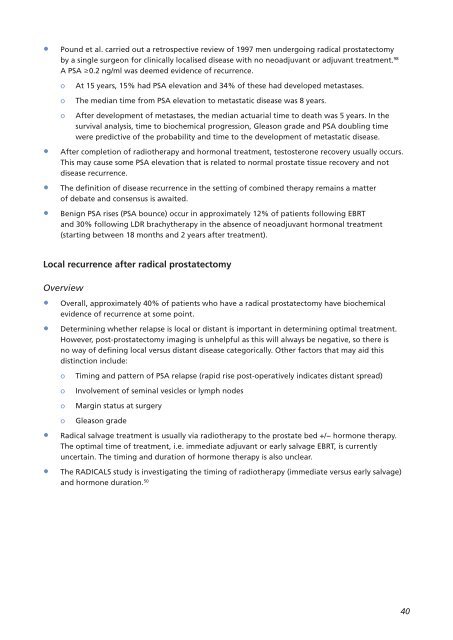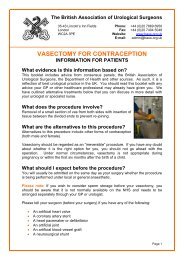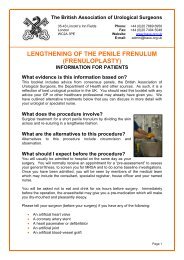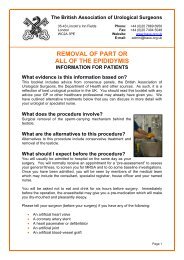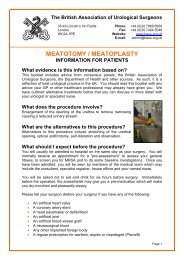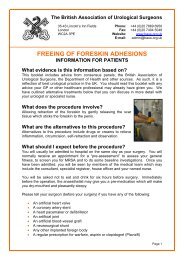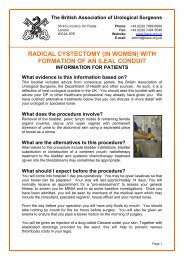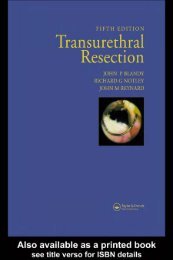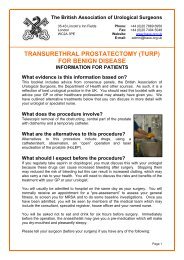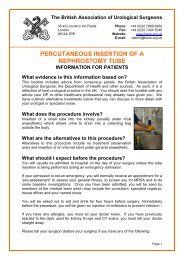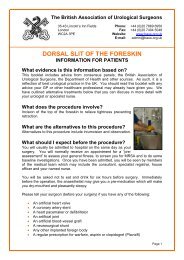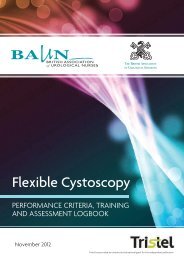MDT (multi-disciplinary team) guidance for managing prostate cancer
MDT (multi-disciplinary team) guidance for managing prostate cancer
MDT (multi-disciplinary team) guidance for managing prostate cancer
You also want an ePaper? Increase the reach of your titles
YUMPU automatically turns print PDFs into web optimized ePapers that Google loves.
• Pound et al. carried out a retrospective review of 1997 men undergoing radical <strong>prostate</strong>ctomy<br />
by a single surgeon <strong>for</strong> clinically localised disease with no neoadjuvant or adjuvant treatment. 98<br />
A PSA ≥0.2 ng/ml was deemed evidence of recurrence.<br />
o At 15 years, 15% had PSA elevation and 34% of these had developed metastases.<br />
o The median time from PSA elevation to metastatic disease was 8 years.<br />
o After development of metastases, the median actuarial time to death was 5 years. In the<br />
survival analysis, time to biochemical progression, Gleason grade and PSA doubling time<br />
were predictive of the probability and time to the development of metastatic disease.<br />
• After completion of radiotherapy and hormonal treatment, testosterone recovery usually occurs.<br />
This may cause some PSA elevation that is related to normal <strong>prostate</strong> tissue recovery and not<br />
disease recurrence.<br />
• The definition of disease recurrence in the setting of combined therapy remains a matter<br />
of debate and consensus is awaited.<br />
• Benign PSA rises (PSA bounce) occur in approximately 12% of patients following EBRT<br />
and 30% following LDR brachytherapy in the absence of neoadjuvant hormonal treatment<br />
(starting between 18 months and 2 years after treatment).<br />
Local recurrence after radical <strong>prostate</strong>ctomy<br />
Overview<br />
• Overall, approximately 40% of patients who have a radical <strong>prostate</strong>ctomy have biochemical<br />
evidence of recurrence at some point.<br />
• Determining whether relapse is local or distant is important in determining optimal treatment.<br />
However, post-<strong>prostate</strong>ctomy imaging is unhelpful as this will always be negative, so there is<br />
no way of defining local versus distant disease categorically. Other factors that may aid this<br />
distinction include:<br />
o Timing and pattern of PSA relapse (rapid rise post-operatively indicates distant spread)<br />
o Involvement of seminal vesicles or lymph nodes<br />
o Margin status at surgery<br />
o Gleason grade<br />
• Radical salvage treatment is usually via radiotherapy to the <strong>prostate</strong> bed +/− hormone therapy.<br />
The optimal time of treatment, i.e. immediate adjuvant or early salvage EBRT, is currently<br />
uncertain. The timing and duration of hormone therapy is also unclear.<br />
• The RADICALS study is investigating the timing of radiotherapy (immediate versus early salvage)<br />
and hormone duration. 50<br />
40


